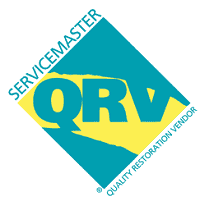A washing machine leak might start small, but if ignored, it can soak your floors, cause mold, and even damage wiring or drywall.
And when your washer is leaking from the bottom, it’s usually a sign that something needs attention now.
At ServiceMaster of Lake Shore, we’ve cleaned up flooded laundry rooms across many Chicago homes.
Here’s a step-by-step guide to help you fix it before the damage spreads.
Key Takeaways
• Watch for signs of a washer leak, including water pooling under the machine, dirty water, warped flooring, musty odors, and water stains near baseboards.
• To fix the leak, start by figuring out when it happens, turn off the power and water, find the source, repair it or call a pro, clean up the water, and contact your insurance provider.
• If you notice water damage, contact ServiceMaster of Lake Shore for professional cleanup and restoration: (312) 707-8597
First, Look for These Signs
If your washer is leaking from the bottom, watch for:
- Water pooling underneath the machine
- Dirty water during or after a wash cycle
- Damp or warped flooring around the washer
- Musty or moldy smells in the laundry area
- Water stains or bubbling paint near the baseboards
If you notice any of these, your washer likely has a leak, and it’s time to troubleshoot.
Step-by-Step: How to Fix a Washer Leaking from the Bottom
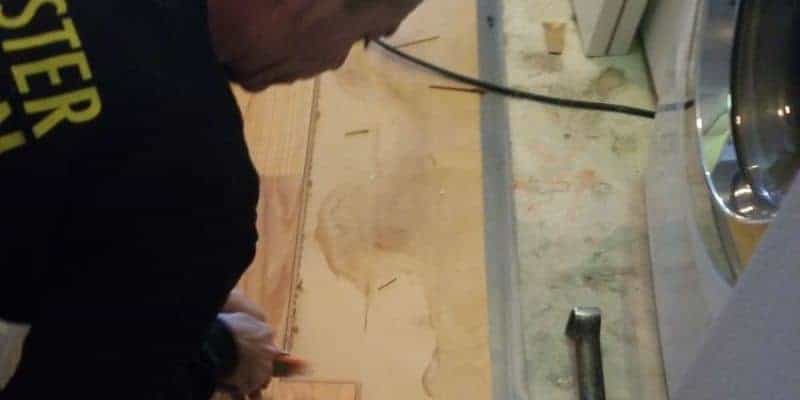
Step 1: Watch When and Where the Leak Happens
Start by observing your washer while it runs a small load. This helps you figure out the cause.
Here’s what to watch for:
- Leak during the fill cycle
- What to look for: Water starts pooling before the drum spins.
- Possible cause: A cracked tub seal or broken water level switch.
- Tip: You may also hear the washer overfilling or see water seeping out underneath early in the cycle.
- Leak during the spin or agitation cycle
- What to look for: Water splashing or dripping only while the drum is spinning.
- Possible cause: An unbalanced washer, loose or cracked drain hose, faulty pump, or tub gasket.
- Tip: You may hear rattling or see water dripping from the back or sides.
- Leak during the drain cycle
- What to look for: Water appears after the wash is done and the machine is draining.
- Possible cause: Loose or damaged drain clamp, cracked hose, or a clogged or broken drain pump.
- Tip: Water may pool near the back or base of the washer.
- Leak continues after the cycle ends
- What to look for: A small puddle forming long after the load finishes.
- Possible cause: A slow drip from the inlet valve, cracked hose, or rusted tub.
- Tip: Try drying the area under the washer, waiting 30 minutes, and checking again.
Step 2: Take Safety Precautions
Once you’ve observed the leak:
- Unplug the washer
- Turn off the water supply valves
- Place towels or a bucket to collect any dripping water
- Wear rubber-soled shoes if the floor is wet
- Use a flashlight to inspect safely without touching anything electrical
Pro Tip: If you’re in a high-rise or multi-unit building in Chicago, let your building management know right away. Leaks can affect units below.
Step 3: Find the Source of the Leak
Now that it’s safe to work, start inspecting common leak points:
Hoses (Fill and Drain)
- How to spot it: Check for wet spots around hose connections at the back of the washer.
- Fix: Tighten any loose fittings. Replace any hoses that are cracked or kinked.
Drain Pump
- How to spot it: Leaks from underneath during or after draining, with rattling or humming sounds.
- Fix: Check for blockages or cracks. Clean if clogged; replace if damaged.
Tub Seal (Bottom of Drum)
- How to spot it: Water leaking from the center bottom of the drum during filling.
- Fix: This is a complex repair that usually requires a professional appliance repair technician.
Water Inlet Valve
- How to spot it: Drips near the top back of the washer, especially after the cycle ends.
- Fix: Inspect for corrosion or cracks. Replace the valve if it’s leaking.
Door Gasket (Front-loaders)
- How to spot it: Water seeping from the door or pooling in the gasket fold.
- Fix: Clean the gasket thoroughly. Replace it if it’s torn or warped.
Overflow or Detergent Dispenser
- How to spot it: Water spills from the top during washing.
- Fix: Use the correct detergent amount. Excess suds can cause internal clogs.
Step 4: Fix the Problem (or Call a Pro)
- Minor fixes like hose or clamp replacement can often be done with simple tools.
- If you see internal damage, unfamiliar parts, ongoing leaks, or if you are not confident about your DIY skills, call a licensed appliance technician.
Step 5: Cleanup and Access the Water Damage
Once the leak is stopped, act quickly to prevent long-term damage:
- Soak up standing water with towels or a wet/dry vacuum
- Use fans or a dehumidifier to dry the area
- Open windows if the weather permits
- Check nearby flooring, baseboards, and walls for signs of hidden moisture
- Look out for musty odors, warping, or soft drywall
- If you spot damage, call ServiceMaster of Lake Shore for a professional water damage cleanup and restoration: (312) 707-8597
Tip: Take photos of the damage before cleanup so you have proof for insurance claims.
Step 6: Contact Your Insurance Company
If the leak caused damage to your floors, walls, or surrounding areas, especially in a multi-level home or shared building, it’s smart to file a claim with your homeowner’s insurance.
- Document everything with photos and notes
- Keep receipts for any professional services or repairs
- Contact your insurance provider and explain what happened
- Ask if the damage is covered under your policy
- If applicable, schedule an adjuster inspection
ServiceMaster of Lake Shore can help document the damage, work directly with your insurance company, and guide you through the claims process to make it easier.
Case Study: Washer Leak in a Glenview Home
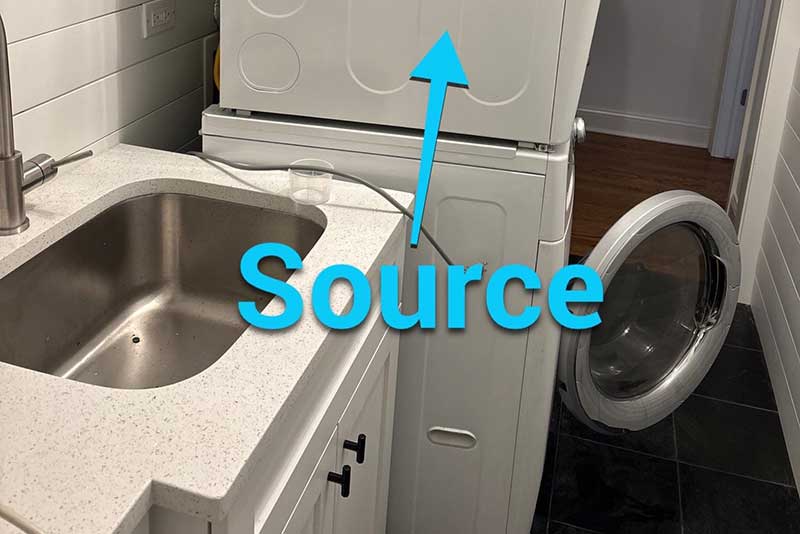
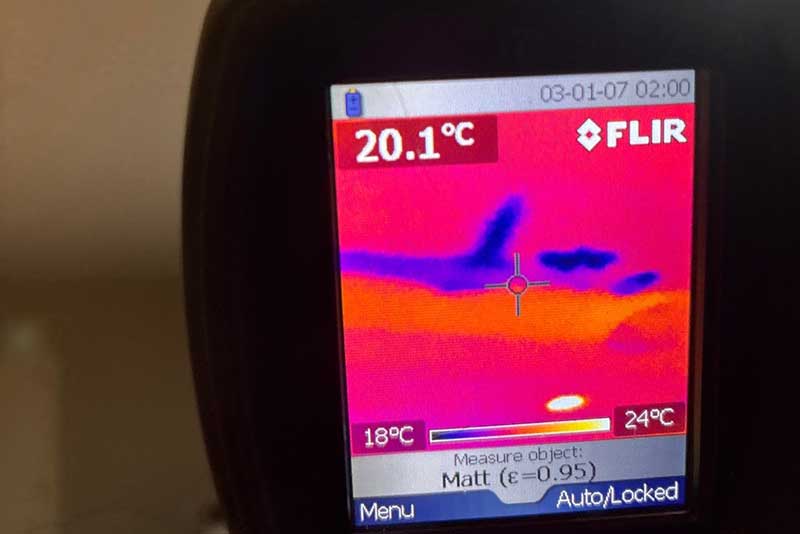
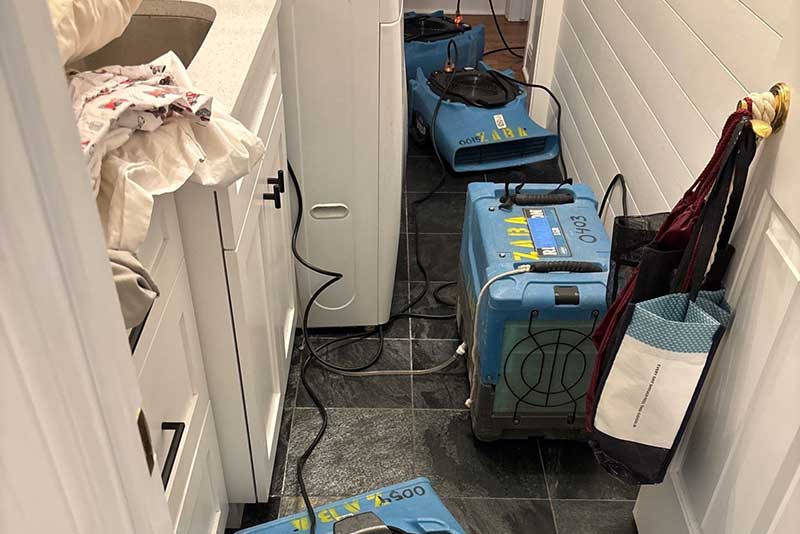
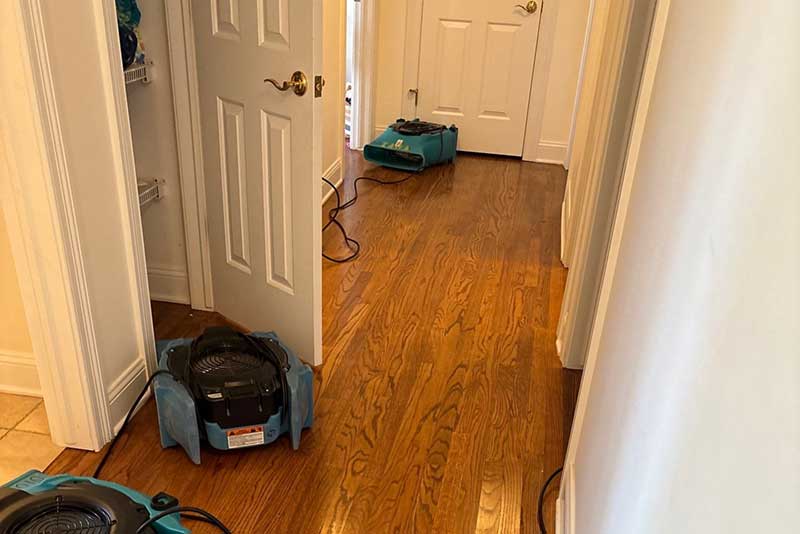
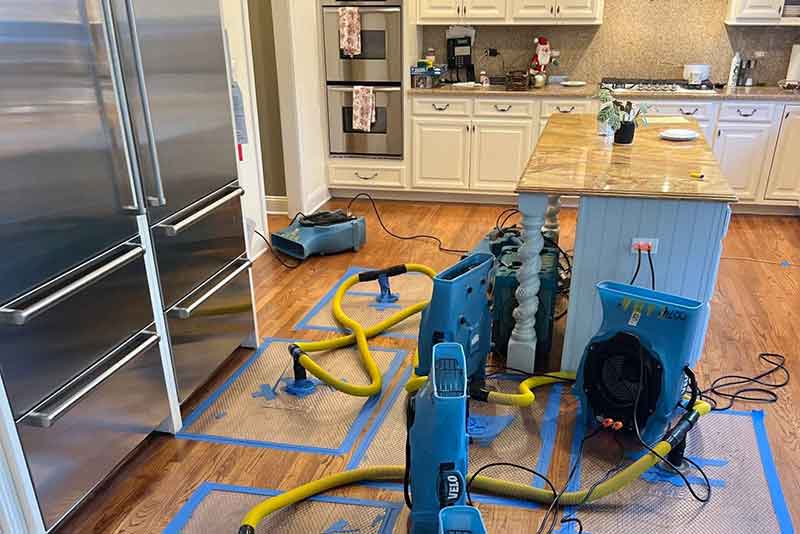
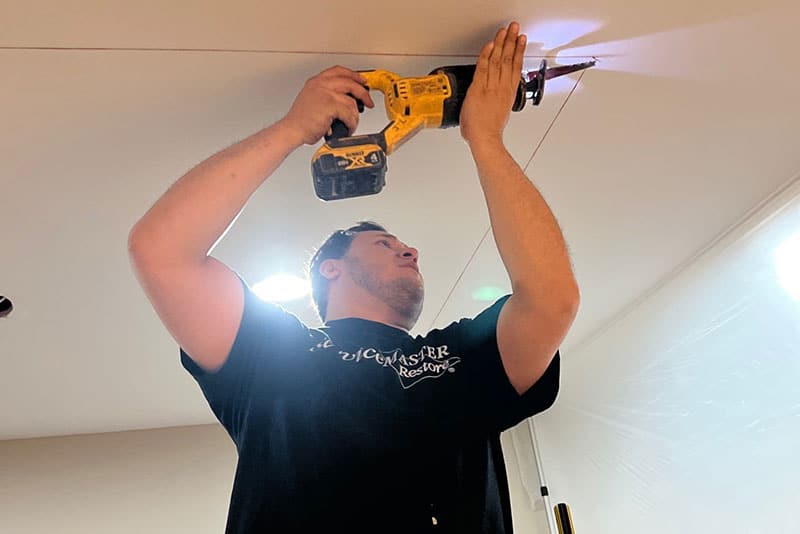
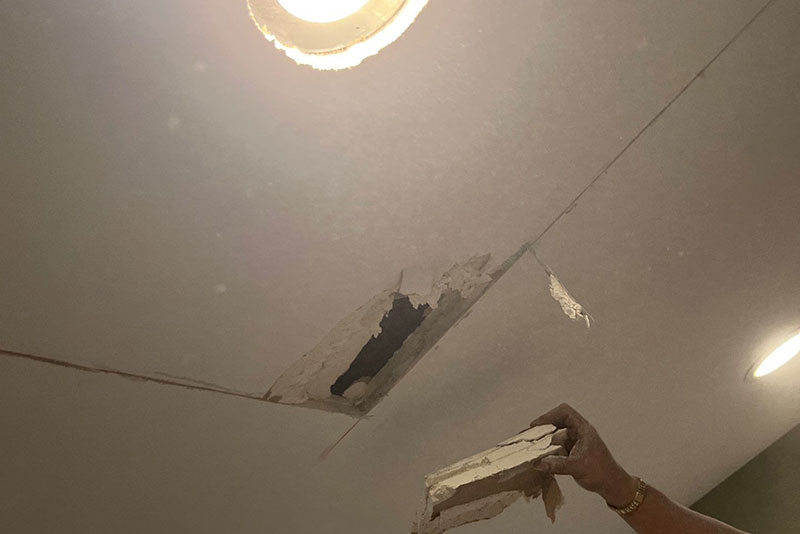
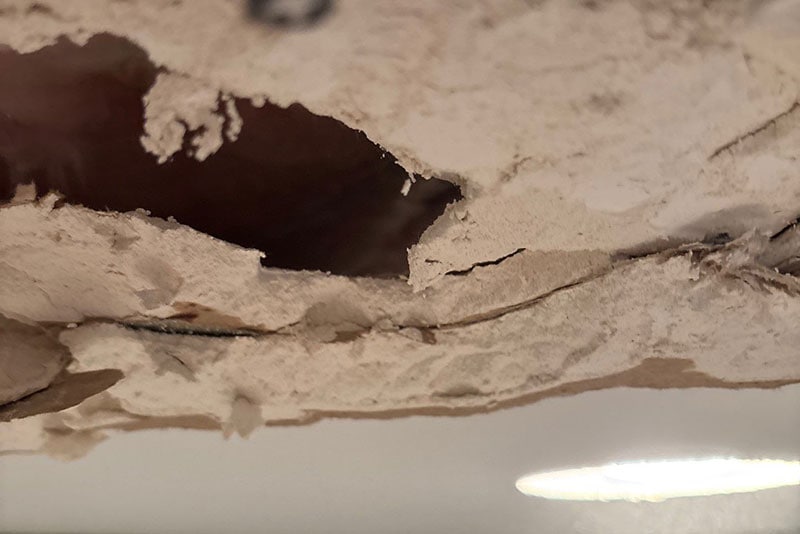
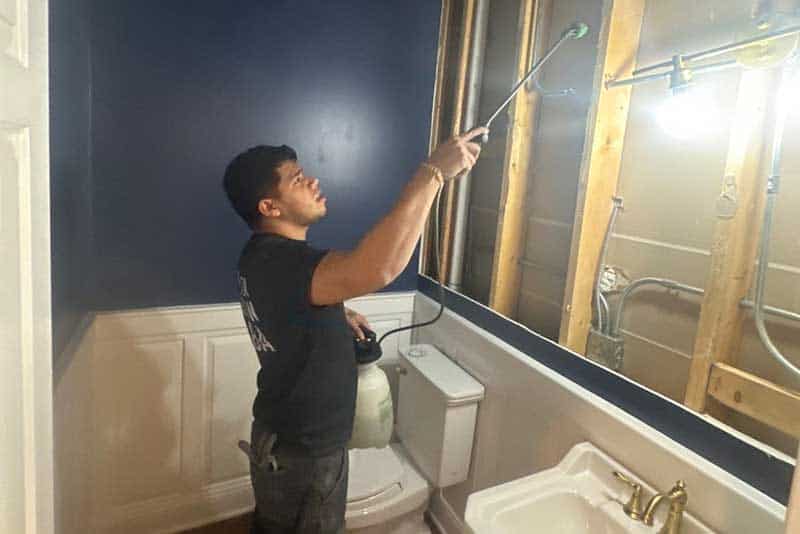
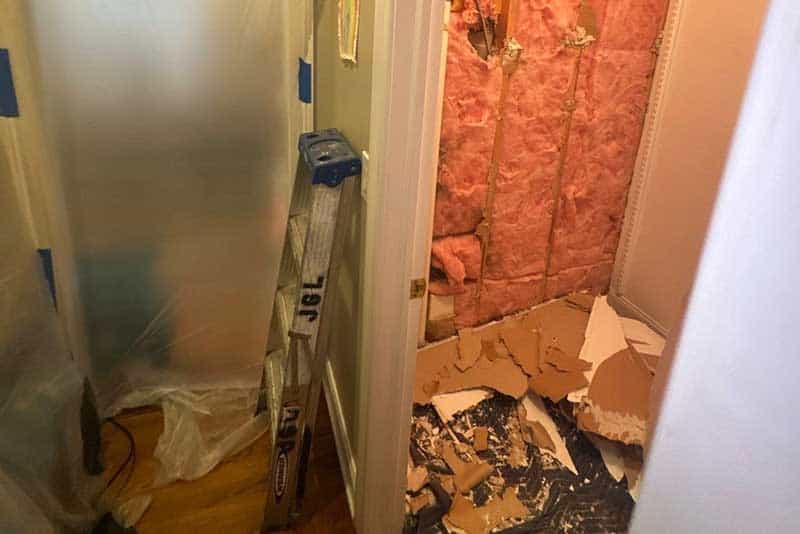
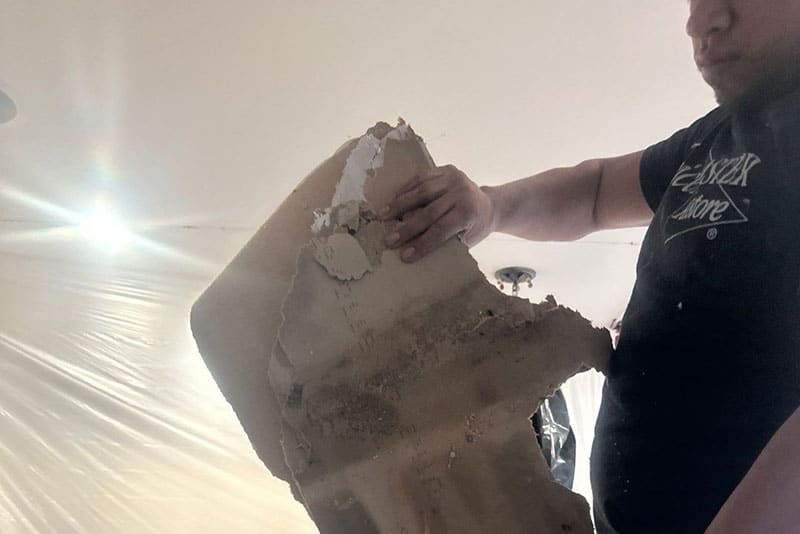
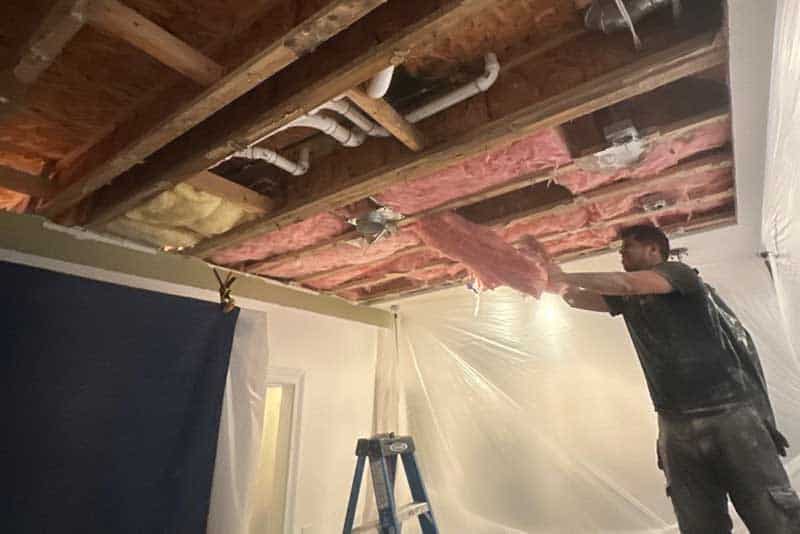
In a Glenview home, a washer/dryer combo on the second floor leaked and caused Category 2, Class 2 water damage across all three levels.
Upstairs, we removed drywall, flooring, and baseboards in several rooms, including the laundry area, hallway, and a bedroom. After cleaning and sanitizing, we set up drying equipment to address moisture throughout the space.
On the first floor, water damaged the kitchen, dining room, and pantry. We removed sections of ceiling, cabinetry, and insulation, then used a combination of air movers, dehumidifiers, and floor drying mats to speed up the drying process.
In the basement, we opened part of the ceiling under the kitchen, removed insulation, and dried a small area of wet carpet.
With the right containment and equipment, we completed full structural drying in just four days.
Need Help After a Washer Leak in Chicago?

If your washing machine leak has turned into a water damage issue, don’t wait. Even a few gallons of water can soak into your floors or drywall and lead to costly repairs.
Our team at ServiceMaster of Lake Shore handles water damage cleanup every day, helping Chicago homeowners recover quickly and safely.
We are serving all Chicago neighborhoods and suburbs, including Lincoln Park, West Loop, Lakeview, Gold Coast, and beyond.
Call us at (312) 707-8597 or request help online.
FAQs
Is a washer leak always an emergency?
Not always, but if water spreads, it can quickly lead to mold, warped floors, and electrical hazards.
Is it worth fixing a leaking washing machine?
Usually, yes, especially if it’s something simple like a loose hose or worn seal, since those fixes are quick and inexpensive.
But if your washer is old or the leak is coming from major internal parts, it might make more sense to buy a new one.
Why is my LG washer leaking from the bottom?
Leaks in LG washers are often caused by clogged drain pumps, cracked hoses, or worn-out door gaskets.
Check for visible cracks or buildup and inspect hose connections.
What causes Samsung washers to leak water during a cycle?
Samsung washers may leak due to unbalanced loads, loose hose clamps, or a damaged drain pump. Leaks are especially common during the spin or rinse cycle.
Why is my Whirlpool washer leaking underneath?
A puddle under your Whirlpool washer may be caused by a damaged water pump, cracked drain pipe, or faulty tub seal, all of which are internal parts that typically require professional repair.





